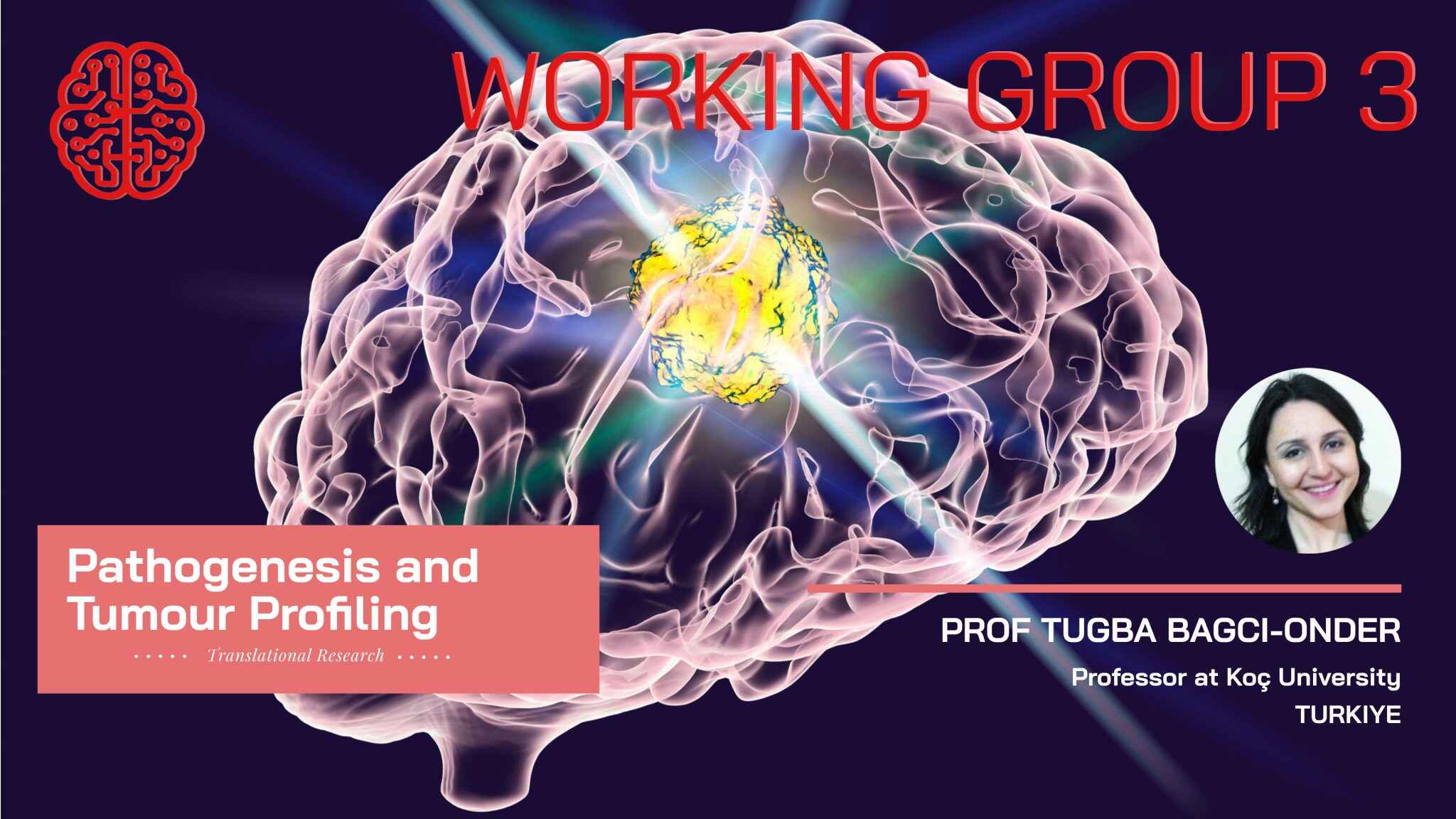WG3. Pathogenesis and Tumour Profiling
Advancing tumor profiling and patient stratification with single-cell technologies, focusing on gene dysregulation patterns and dynamic glioblastoma stem cell transitions for therapeutic interventions.
WG3. Pathogenesis and Tumour Profiling

210
Members
Prof Tuga Bagci-Onder
WG Leader
Dr Yasin Kaymaz
WG Co-Leader
Biomedical, Bioinformatics
Category
Pathogenesis & Tumour Profiling (Theme 3): A deep understanding of tumour pathogenesis and progression is central to patient stratification and treatment optimization. It enables the identification of individuals most likely to benefit from specific therapies while enhancing our knowledge of treatment-related toxicities, cancer recurrence, and drug resistance. Single-cell resolution studies have proven essential, revealing remarkable regional heterogeneity within cancer tissues.
To gain a comprehensive understanding of brain tumour biology, this Action applies novel single-cell-based experimental techniques (e.g., scRNAseq, SCP, SCM) alongside DNA methylation and computational approaches. These methods aim to elucidate how the brain tumour microenvironment contributes to drug resistance and recurrence across tumour types — from low-grade to high-grade and from paediatric (e.g., medulloblastoma) to adult (e.g., glioma) cases.
Formalin-Fixed Paraffin-Embedded (FFPE) and fresh tissue samples will be sourced from repositories such as EuroBioBank, UK Biobank, and collaborating cancer centres. In parallel, single-cell spatial epigenetic technologies will be advanced to tag epigenetic states in situ and decode chromatin accessibility, histone modifications, and transcription factor binding at the single-cell level. Analytical efforts will integrate both data-driven and hypothesis-driven frameworks, supported by robust bioinformatics and AI/ML tools to enhance reproducibility and insight generation.
Objectives
To unravel the mechanisms of brain cancer pathogenesis and optimize preclinical models, aligning with RCO2 and RCO3.
Tasks
T3.1 Improve best practices in single-cell techniques for patient stratification.
T3.2 Conduct spatial analyses of intratumoral heterogeneity regarding subclonal evolution and treatment response.
T3.3 Organize WG3 collaborative meetings.
Activities
Active participation in MC and WG3 meetings; co-organizing a joint WG2/WG3 conference; contributing to annual and final reports, two peer-reviewed joint publications, and dissemination, exploitation, and training activities.
Milestones
M3.1: WG2/WG3 joint conference (Month 22)
M3.2: Mid-term report (Month 25)